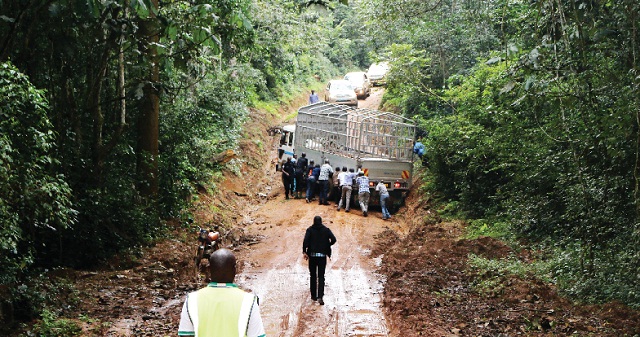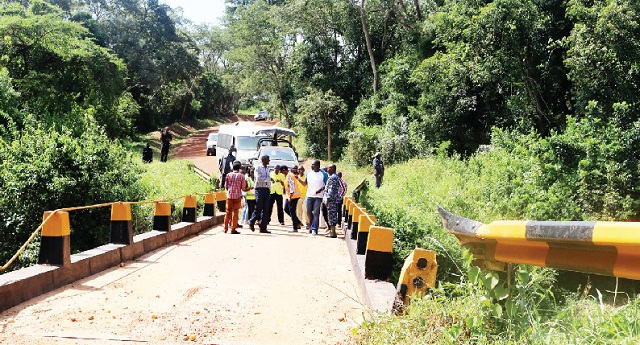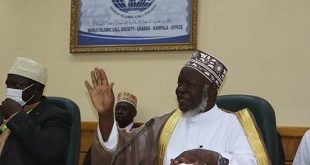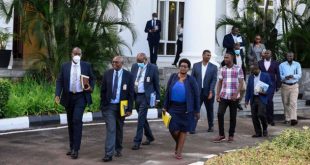
Driving 700km in two days to see Uganda’s critical oil roads project
Kampala, Uganda | RONALD MUSOKE | Allen Kagina, the executive director of the Uganda National Roads Authority (UNRA) is a prayerful woman. She prays at meetings, journeys, meals, and anything. Now, however, she possibly needs prayers more than ever before – for Uganda’s so-called oil roads.
She needs to prepare about 700km of oil roads in 24 months on a lean budget of just US$600 million (Approx. Shs2.2 trillion).
Road projects vary in scope and cost, but the most cited figures claim it usually takes 24 months and about US$50 million to do a 50km road.
The roads Kagina must build are found mainly in the districts of Hoima, Buliisa and Masindi where close to 70% of Uganda’s 6.5 billion of barrels of oil is found. She must acquire land and pay Project Affected Persons (PAPs) and do civil works on 10 roads.
Can Kagina do it cheaper, quicker?
I thought about this recently when Kagina and her team from UNRA took a bunch of journalists; including me, on a spot check of what needs to be done.
We were on day two of our inspection tour when fate threw Kagina’s challenge at us. Imagine a convoy of eight vehicles, about three SUVs, a van, and a few pick-up trucks carrying the police escort, rolling down a really narrow road through a forest.
The road is the 15km Rwera-Kaseeta stretch through Bugoma Forest. We were driving north from the Kingfisher oil field operated by the Chinese firm; China National Offshore Oil Corporation (CNOOC) on the southern tip of Lake Mwitanzige (Albert) in Hoima District when we decided to take the short-cut. It was a big mistake because, as we were winding along the narrow strip of road through the thick tropical rain forest, we came upon a huge truck loaded with tonnes of cement. It had failed to climb the slippery stretch of road, possibly because of its tyres – which appeared worn-out and smooth.
The truck’s diminutive middle-aged driver said he had spent the past two days stuck at the spot. We offered to help, really hoping we could create a way for our convoy to pass. But after about 15 minutes of failure and the threat of a tropical downpour, we abandoned the hapless driver and backtracked and took a longer route of about 40kms.
This is one practical example of what a senior official of CNOOC at Kingfisher had earlier told us when he spoke about the importance of the roads that Kagina has to construct.
“Oil companies cannot do oil and gas operations without roads,” he said, “Roads are one of the most critical in oil and gas operations.
“For every hour you lose, there are a lot of standby fees charged which could run into tens of thousands of dollars; which is why you need good roads.”

The roads Kagina is to build were prioritized in early 2016 as the primary mode of transport to move up to 12 million tonnes of materials to the Albertine region where a joint venture of oil companies—the Chinese firm, CNOOC, France’s Total and the Irish company, Tullow— are to build critical oil production infrastructure.
The oil companies asked the government to ensure a reliable two-way all weather road system from the Indian Ocean coast to the Lake Albert region to transport an estimated 12 million tonnes of often heavy and often out of gauge equipment and materials that the projects require.
The oil companies have made plans based on the logistics infrastructure available, mainly road. They have, for instance, designed a logistics envelope based on the most feasible freight dimensions (length of 25m, width of 5m and height of 4.7m and weight of at least 120 tonnes).
They are currently concentrating on designs of what needs to be built, technically called the Front End Engineering Design (FEED), including designs and compilations of requirements for central processing facilities, feeder pipelines, and the crude export pipelines. The FEED studies for the oil pipeline and the CPFs are nearing completion.
Some of the internationally sourced materials will come via Mombasa along the northern corridor, via eastern Uganda, move northwards and take a turn at Tangi into Murchison Falls Park to Para, Buliisa, onto Masindi and finally to Hoima.
 The Independent Uganda: You get the Truth we Pay the Price
The Independent Uganda: You get the Truth we Pay the Price



Let it be constructed as the ugandans get jobs
Can the independent help us access how many years UNRA has been under this new management and how many Kilometers of road have been constructed during this period. This will help us understand the rate at which this team constructs roads and give a fairer indication of whether 600 km in 2years is a big ask or not.
it is better that kagina also tasted it. Let unra speed up.